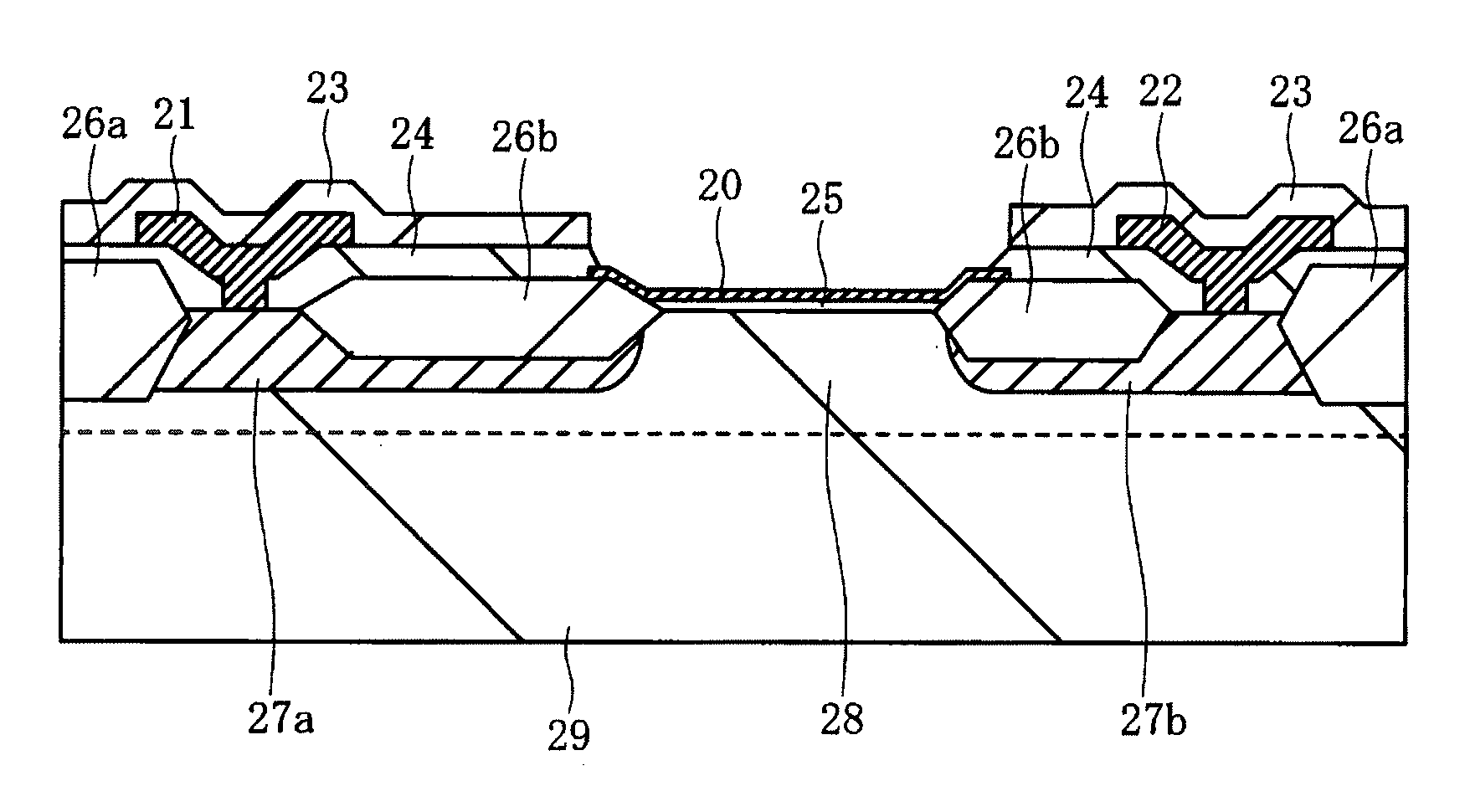Semiconductor Gas Sensor And Method For Producing The Same
a technology of semiconductor devices and gas sensors, applied in semiconductor devices, material analysis, instruments, etc., can solve the problems of gas sensor not responding to hydrogen, gas sensor lack of reliability, basic technique of gate electrodes, etc., and achieve the effect of increasing the response speed
- Summary
- Abstract
- Description
- Claims
- Application Information
AI Technical Summary
Benefits of technology
Problems solved by technology
Method used
Image
Examples
first embodiment
[0082]The present inventors performed annealing (a heat treatment) of a Si-MISFET having a Pt—Ti—O gate structure in an air atmosphere at 400° C. for 68 days. The thickness of a Pt film is 15 nm, the thickness of a Ti film is 5 nm, and the thickness of a SiO2 film is 18 nm. The gate length (Lg) is 10 μm, and the gate width (Wg) is 150 μm. It was found that by performing this treatment, the structure is changed such that a TiOx nanocrystal (a TiOx microcrystal) in a modified Ti film grows large, and an oxygen-doped amorphous Ti region is significantly reduced (hereinafter, a crystalline film composed of a TiOx nanocrystal (a TiOx microcrystal) is referred to as a modified TiOx film). This phenomenon occurs in an extremely thin film having a thickness of about 5 nm, and in a common bulk Ti film, a TiOx nanocrystal does not grow large. The phenomenon in which a TiOx nanocrystal in a modified Ti film grows large even at a relatively low temperature as compared with the melting point (17...
second embodiment
[0122]The modified Pt—Ti—O gate structure is stabilized by annealing at 400° C. over a long period of time of 68 days, and therefore, by applying the modified Pt—Ti—O gate structure to a SiC-MISFET gate electrode, stable operation can be achieved at a temperature of about 400° C. for a long period of time. A point that the modified Pt—Ti—O / SiO2 / SiC substrate structure adopting this gate structure is very stable is different from the Pt (100 nm) / SiO2 / SiC substrate structure (“Pt 100 nm” is described on the third line from the bottom of the left column in page 201 of the above-described NPL 4) in the related art.
[0123]In a production process of forming a SiC-MISFET-type gas sensor, after forming a gate insulating film (e.g., a SiO2 film), hydrogen annealing is performed at 800° C. to 1000° C. for about 30 minutes, whereby hydrogen termination is performed in the vicinity of a SiO2 / SiC boundary surface. By doing this, a phenomenon in which terminating hydrogen starts to be desorbed (a ...
third embodiment
[0151]In the above-described second embodiment, as the gate electrode of the SiC-MISFET, a modified Pt—Ti—O gate structure is applied, and therefore, the operation temperature capable of ensuring reliability is up to 630° C. In order to ensure a temperature higher than 630° C., for example, a temperature up to 930° C. as the operation temperature capable of ensuring reliability, a modified Ir—Ti—O gate structure is needed. A gate portion and a heater wiring portion are different from those in the above-described second embodiment, and therefore, different points from the above-described second embodiment will be mainly explained.
[0152]The basic structure of the SiC-MISFET-type gas sensor having a modified Ir—Ti—O gate structure according to the third embodiment will be described with reference to FIGS. 10 to 11B.
[0153]FIG. 10 is an enlarged schematic cross-sectional view of a part of a gate structure of the SiC-MISFET having a modified Ir—Ti—O gate structure according to the third e...
PUM
 Login to View More
Login to View More Abstract
Description
Claims
Application Information
 Login to View More
Login to View More - R&D
- Intellectual Property
- Life Sciences
- Materials
- Tech Scout
- Unparalleled Data Quality
- Higher Quality Content
- 60% Fewer Hallucinations
Browse by: Latest US Patents, China's latest patents, Technical Efficacy Thesaurus, Application Domain, Technology Topic, Popular Technical Reports.
© 2025 PatSnap. All rights reserved.Legal|Privacy policy|Modern Slavery Act Transparency Statement|Sitemap|About US| Contact US: help@patsnap.com



